Basic Information
Observation Details
Observation Date:
February 28, 2024Submitted:
February 28, 2024Observer:
TAC - Andy BondZone or Region:
Taos AreaLocation:
Wind Slabs and continued Persistent Slab ProblemsSigns of Unstable Snow
Recent Avalanches?
None ObservedCracking?
IsolatedCollapsing?
IsolatedMedia
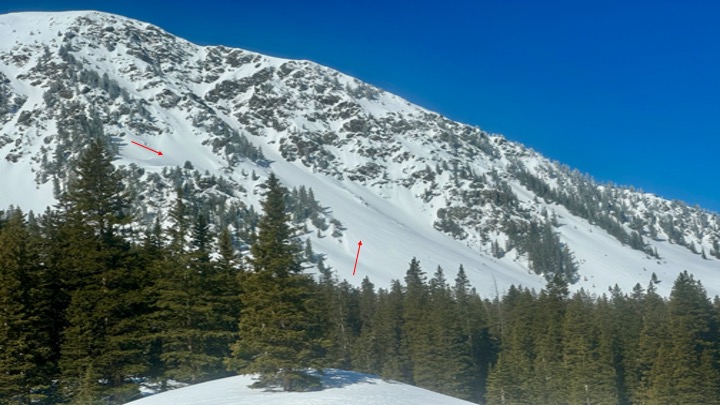
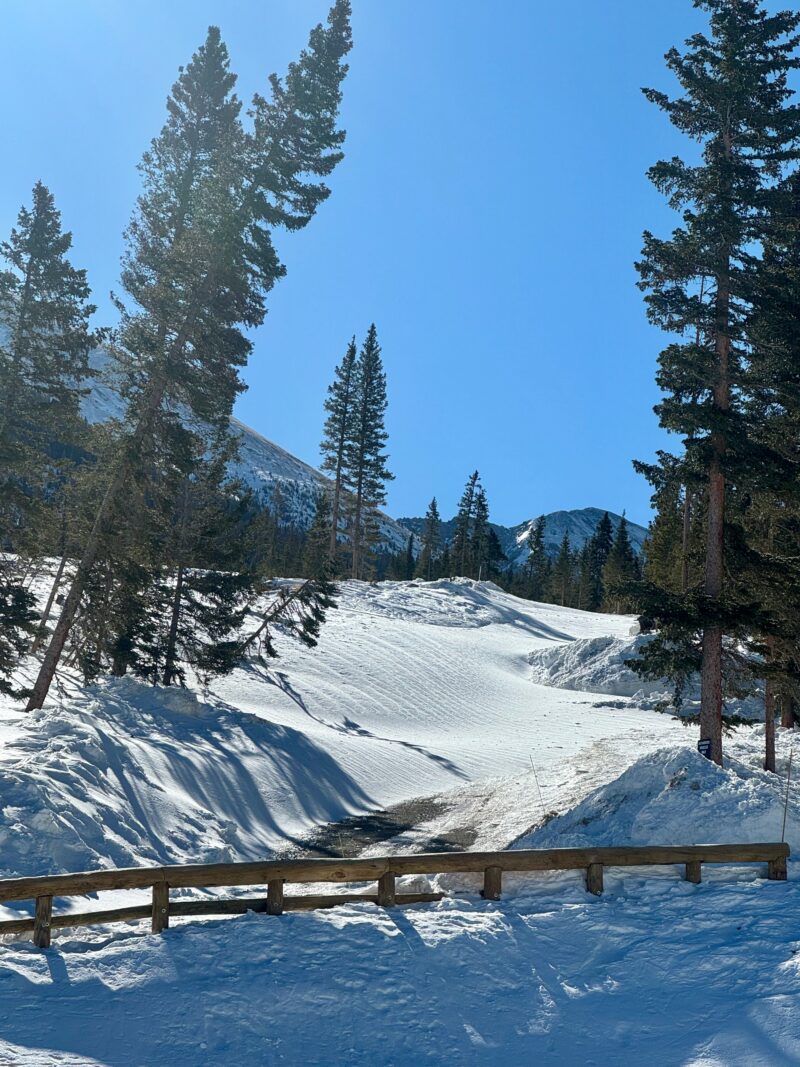
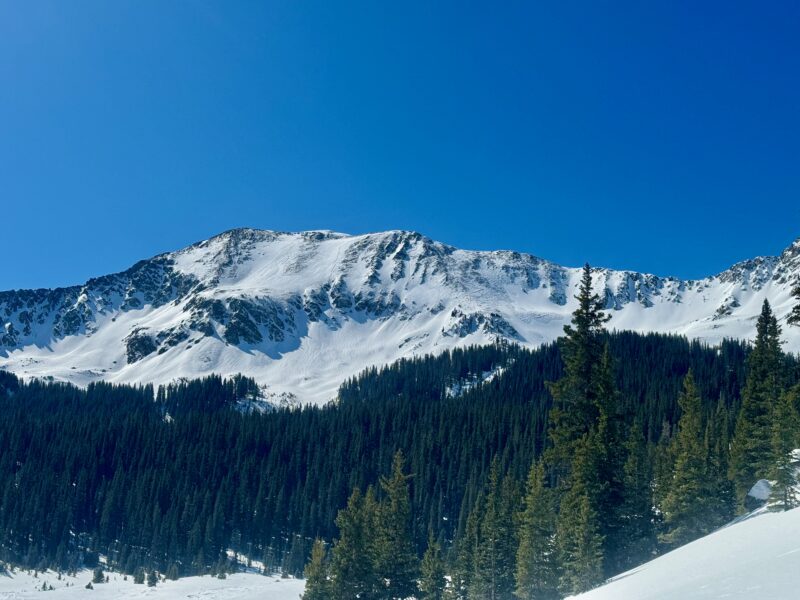
Advanced Information
Weather Summary
Cloud Cover:
Mostly SunnyTemperature:
18 - 38Wind:
Calm , WA beautiful sunny day that warmed up quickly with single digit winds.
Snowpack Observations
The very strong winds during the 2/27 storm has stripped and scoured some slopes and loading others. It appears that we likely didn't pick up 8 inches of snow probably more like 4 to 6 to at most during the storm. Some slopes that were holding snow prior to the storm have been stripped down to bare dirt. See the photo of the inverted skin track from Charlie and I last week on No Name Peak. Hard to believe we were skiing powder there a week ago and now it's down to bare ground. Other slopes especially east facing above treeline terrain looks loaded and smooth.
Wind slabs were not as reactive as one would've thought and results and cracking and collapsing were limited to slopes where facet crust combos and near surface faceting were present prior to the storm. These slabs which are pretty obvious to identify are 10 to 30 cm thick although I didn't make it to the ridgeline proper above treeline. These slabs were 4 F to P hard sometime supportable, with some decent skiing on soft sastrugi.
Deeper down in the snowpack, found a shallower spot 140 cm deep that continues to produce results in ECTs on the early January drought facet layer. It's slopes like these are concerning as deeper buried weak layers have been slow to heal and you're more likely to impact these these weak layers.
It's that time of year when things are warming up and taking heat quickly. Don't forget your glob stopper and scrapper as you transition from wet to dry snow.
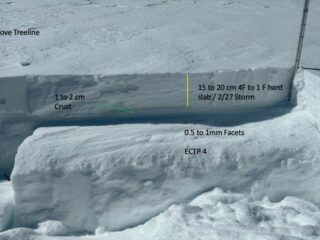
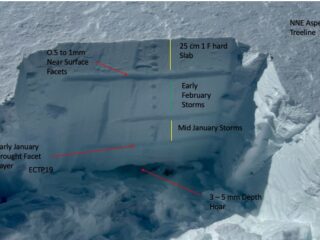
Avalanche Problems
| Problem | Location | Distribution | Sensitivity | Size | Comments |
|---|---|---|---|---|---|
 Wind Slab
Wind Slab
|
|
Wind slabs were more stubborn than would've thought with strong winds during the storm. WInd slabs were obvious to identify a slopes were smooth, rounded, firm underfoot and not strip or scoured. Didn't make it to ridgetop proper but was finding 15 to 30 cm 4F to P hard slabs. Where I was getting results in stability and got collapsing and cracking was where these wind slabs were on top of near surface facets or Facet/Crust Combos. It seemed like wind slabs were more reactive if you had those weak layers present and not just a crust. | |||
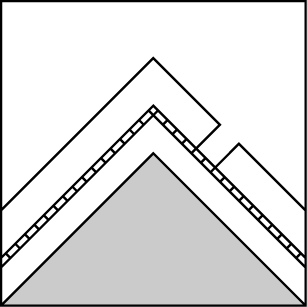 Persistent Slab
Persistent Slab
|
|
The persistent slab problem is really confined to areas where you can impact weak layers. This will be in snowpacks typically less than 1.5m deep. In a 140 cm snowpit the early January drought facet layer failed on ECTP19. That's a relatively low score with the weak layer buried a little over 100 cm down. One of the meaningful results from explosive control work teams this morning was from uncompacted terrain below terrain that is open and exposed. They triggered a persistent slab avalanche 2 + feet deep and 75 feet wide that put a 6 foot debris pile on a cat track. This slope has run previously and illustrates the importance of more reactive slabs and some loading awakening persistent weak layers that were mainly dormant before this storm. |
Terrain Use
Became more aggressive during the day, and will be dropping avalanche danger to Moderate across the board for tomorrow.
Close